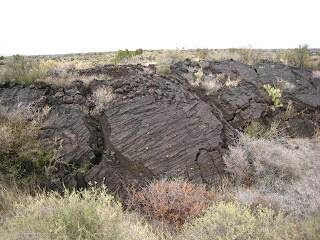This formation is one end of a gigantic U-shaped limestone reef that extends up past Carlsbad, curves around back into Texas, and continues for over a hundred miles. Much of the formation is still buried under subsequent layers of sedimentary rock, but it is exposed at the surface in several named mountain regions. Carlsbad caverns are carved (well, actually dissolved) out of this same limestone. It is one of the most significant and interesting geological formations in the world.
As you drive south from Carlsbad toward El Capitan you come first to McKittrick Canyon, which has a small visitor center and hiking trail up into the canyon. Tyler and Paula walked a short way up into it. White limestone everywhere. You can Google it and learn about the rich diversity of plant and animal life in this unexpected oasis in the middle of the vast American western desert.

























